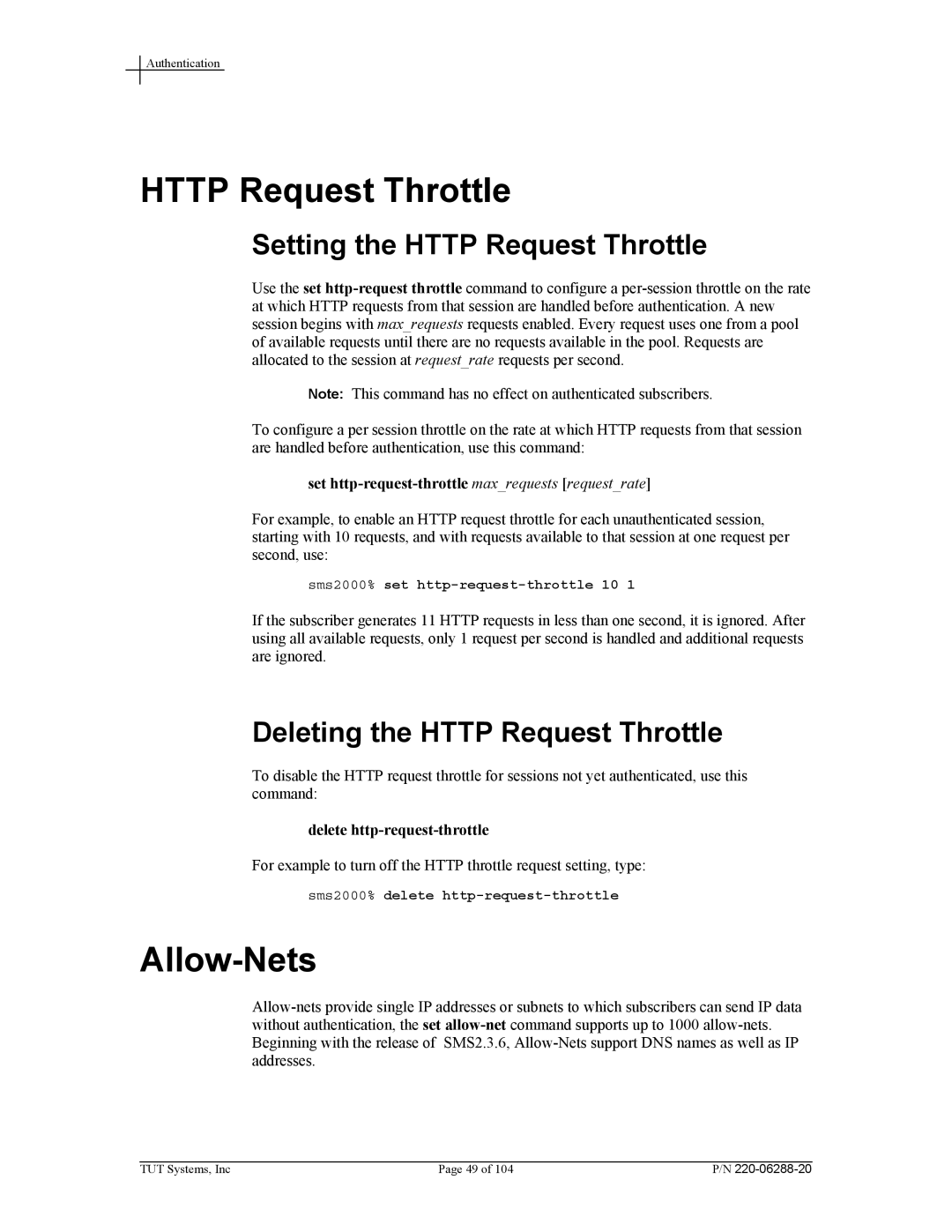
Authentication
HTTP Request Throttle
Setting the HTTP Request Throttle
Use the set
Note: This command has no effect on authenticated subscribers.
To configure a per session throttle on the rate at which HTTP requests from that session are handled before authentication, use this command:
set http-request-throttle max_requests [request_rate]
For example, to enable an HTTP request throttle for each unauthenticated session, starting with 10 requests, and with requests available to that session at one request per second, use:
sms2000% set
If the subscriber generates 11 HTTP requests in less than one second, it is ignored. After using all available requests, only 1 request per second is handled and additional requests are ignored.
Deleting the HTTP Request Throttle
To disable the HTTP request throttle for sessions not yet authenticated, use this command:
delete http-request-throttle
For example to turn off the HTTP throttle request setting, type:
sms2000% delete
Allow-Nets
TUT Systems, Inc | Page 49 of 104 | P/N |
